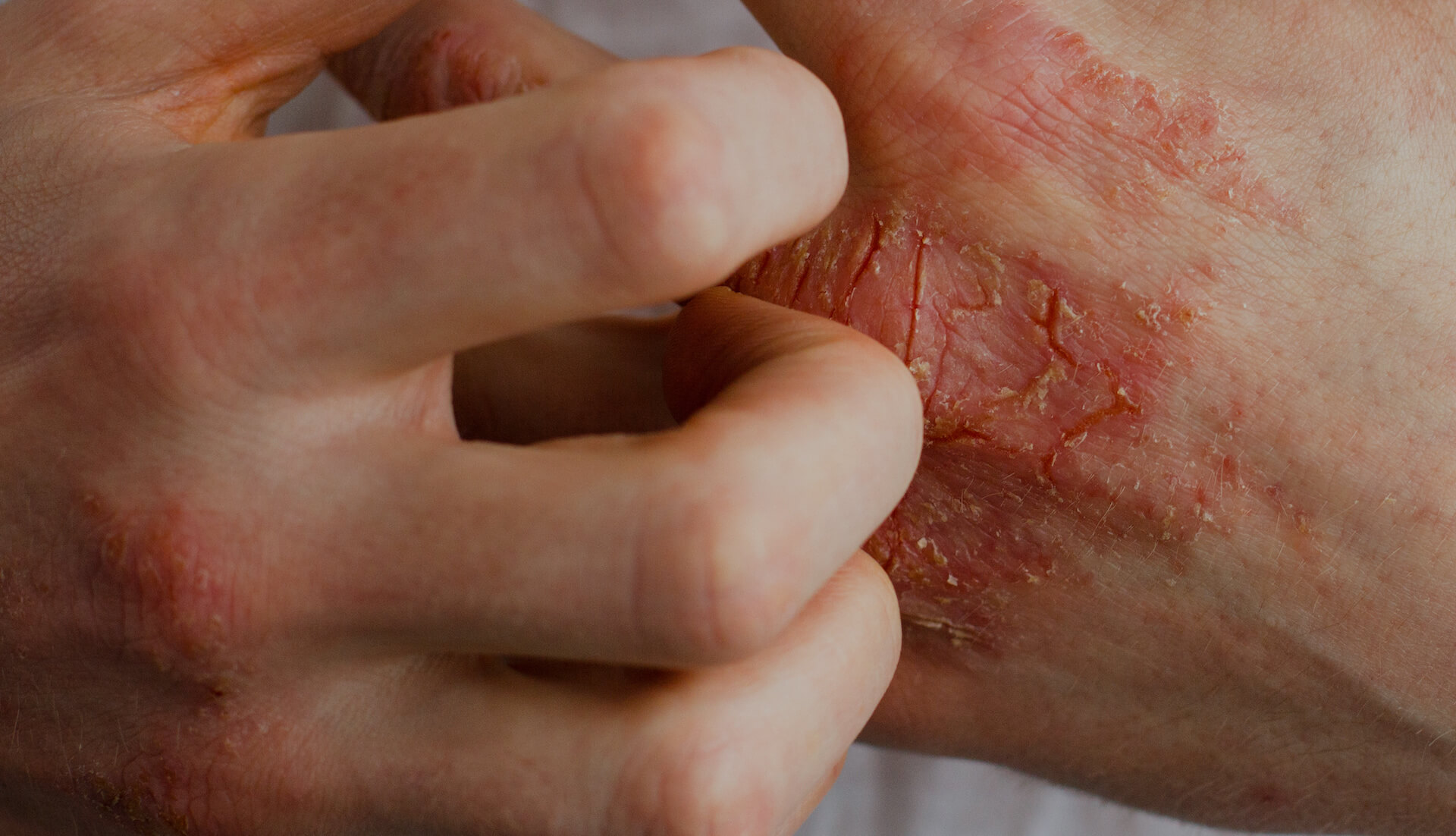What is atopic dermatitis and why does it occur?
Atopic dermatitis is an itchy inflammatory skin disease with a recurrent character. Cases of atopic dermatitis are increasing worldwide. Proper diagnosis as well as management of treatment is important, even in mild forms of eczema. It is necessary to prevent its further development. Diagnosis is based on a comprehensive history and examination by a dermatologist, whose regular visits are crucial to keeping the disease under control.
The tendency to atopy is hereditary. Many internal and external factors are involved in the onset and course of this disease. The skin and mucous membranes are sensitive to substances that are commonly found in our environment and enter the body through the skin, the respiratory tract or the digestive tract. The immune system of an atopic person responds to them with a disproportionate reaction.
What are the manifestations of atopic dermatitis?
As a consequence of hyperreactivity of the skin, dryness and inflammation, small pimples to eczema deposits, swelling, redness to wetting occur. Even mild irritation of the skin causes severe to paroxysmal itching, which forces the patient to scratch inappropriately, thus aggravating the inflammation in the skin and forming wounds that can be a gateway to bacterial superinfection.
The skin manifestations of atopic dermatitis vary from patient to patient, but they share common characteristics, change with age and can be divided into 3 stages:
- the stage and first manifestations of the disease occur most often on the cheeks but also on the trunk and limbs v 2.-3. month of the child's life, as dry reddened papules, vesicles with a tendency to coalesce into larger infiltrated and reddened imprecisely circumscribed foci, associated with paroxysmal pruritus.
- phase begins about from the 2nd year life. Inflammatory manifestations appear to a greater extent in the joints of the limbs, neck, around the wrists, ankles, but also generalized on the whole body. They are associated with persistent itching, and often with reactive enlargement of the lymph nodes.
Phase 3 occurs during adolescence and persists into adulthood, the inflammatory manifestations affect the trunk and limbs in addition to the face. The skin is thickened in a focal manner, itching persists. Periods of improvement alternate with flare-ups. In adulthood, contact allergic dermatitis and hypersensitivity to various substances, most often to metals, often develop. Adult atopics can go through all the stages of the disease, or some is missed, and the disease can appear even after a long period without difficulties.
What are the most common causes of a flare-up or worsening of eczema?
- increased dryness of the atopic skin (insufficient protective barrier of the skin).
- irritating stimuli: frequent contact with water, soaps, detergents, washing and cleaning agents, disinfectants, chlorine, contact with wool, sand, clay.
- contact and airborne allergens: house dust, dust mites, pollens, animal allergens, fur, moulds.
- Food allergens and diets high in histamine: most commonly cow's milk, eggs, fish and seafood, citrus fruits and exotic fruits, tomatoes, celery, cocoa, poppy seeds, honey, nuts, legumes, soy, mustard, proteins in cereals, sauerkraut, canned foods, exotic spices or smoked meats.
- microorganisms: bacterial infections (mainly golden staphylococcus), viral diseases of the upper respiratory tract, fungal infections (mainly yeast).
- other influences: tooth growth, vaccinations, stress, psychological changes, sweat, climatic changes, hormonal changes.
How is atopic dermatitis treated?
The basis of the treatment is to regularly massage the skin with moisturizing creams and ointments (emollients), as well as moisturizing bath preparations. For each patient, it is necessary to find the right products for daily preventive care that best suits their skin. In the event of an acute flare-up, it is essential to consult a dermatologist who will select the most appropriate treatment individually. This consists in the administration of general antihistamines controlling itching of the skin and intensive topical anti-inflammatory treatment. The aim of comprehensive treatment of eczema is to stabilise acute flare-ups and, with appropriate preventive care and lifestyle management, to maintain a symptom-free period for as long as possible.
Is it possible to cure eczema completely?
The most important therapeutic influence of the disease is to gain control over the clinical symptoms of the disease and the itch. With careful adherence to preventive and therapeutic measures, it is possible to maintain the disease in a quiescent, symptomless stage, which eases with age and completely disappears in most children. However, it requires great patience on the part of parents and patients, cooperation in eliminating possible factors aggravating eczema, setting a proper lifestyle, regular check-ups by a dermatologist, and adherence to skin care treatment measures.
What is the correct lifestyle for this disease?
Specific lifestyle and comprehensive measures are an important part of treatment and alleviation of symptoms. It is advisable to start with measures already at the time of diagnosis in the family, by eliminating allergens during the last months of pregnancy and during breastfeeding. In the infant's diet, it is ideal to delay the administration of cereals and cow's milk protein.
The most pronounced effect of nutrition is by the 1st year of the child's life when introducing food. Avoid irritating foods, try to provide a clean, moist, rather cooler dust-free environment without carpets and curtains. Choose airy clothing, light colored cotton clothing, avoid wool. Clothes should be properly washed and rinsed thoroughly in a powder designed for sensitive baby skin without fabric softener before first use. Keeping a diary can help to detect and avoid individual allergens and irritants that are causing worsening eczema symptoms in a particular patient.


